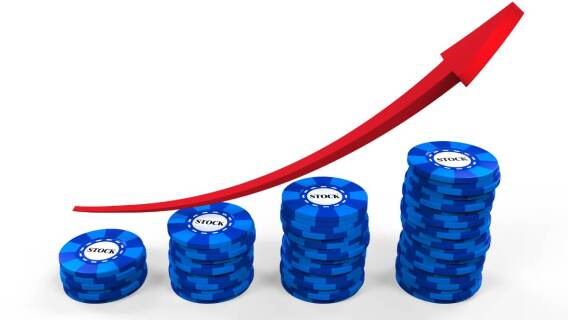This is a guest contribution by Bob Ciura of Sure Dividend. Sure Dividend helps individual investors build high quality dividend growth portfolios for the long run.
The U.S. economy is facing the possibility of a recession in 2020, perhaps a severe recession that could impact virtually every market sector. In a recession, few industries will be spared, which means investors should become more selective.
We believe high-quality dividend growth stocks should be favored in a recession. For example, we broadly define blue-chip stocks as those that are on either the Dividend Achievers, Dividend Aristocrats, or Dividend Kings lists and have raised their dividends for at least 10 consecutive years.
These steady dividend payers continue to provide shareholders with income that proves to be especially valuable when markets are falling. The following three blue-chip stocks should continue to pay their dividends, even in a recession. Even better, they are likely to keep raising their dividends each year, thanks to their recession-resistant business models.
Blue-Chip Dividend Stock: Johnson & Johnson (JNJ)
Johnson & Johnson (JNJ) is a healthcare giant with a market capitalization of nearly $400 billion. It has very large businesses across the healthcare industry, such as pharmaceuticals, medical devices, and consumer health products. J&J has increased its dividend for over 50 consecutive years, which makes it a Dividend King.
In fact, J&J performed very well in the previous recession of 2008-2009. According to data compiled by Value Line, the company grew its earnings-per-share by 10% in 2008, and 1% in 2009, when many other companies were reporting steep declines or losses. J&J’s resilience stems from the fact that as a healthcare manufacturer, its customers cannot stop purchasing their products, even in a recession. This gives J&J steady profits, which allows it to continue increasing its dividend each year.
J&J has continued to perform well in 2020. In the first quarter, revenue increased 3% to over $20 billion, while adjusted revenue—a non-GAAP figure that strips out non-recurring items like divestments and foreign exchange, increased 5%. Adjusted EPS increased 10% for the first quarter. And while J&J expects conditions to worsen throughout the year (guidance calls for adjusted revenue falling ~1% at the midpoint) the company will remain highly profitable.
Future growth will come primarily from J&J’s pharmaceutical pipeline. Pharmaceutical sales increased by more than 10% in the most recent quarter. Global oncology sales increased 22% to over $3 billion last quarter, with future growth in store from new products. The company expects to file at least 10 new products by 2021 that could each generate $1 billion or more in annual sales.
J&J is not the cheapest stock around, trading for a P/E ratio of 19x based on consensus earnings per share estimates of $7.65 for 2020, but high-quality stocks like J&J typically hold a well-deserved valuation premium. The company is a consistent dividend payer with a solid 2.7% yield and consistent dividend growth, even in recessions.
Blue-Chip Dividend Stock: Procter & Gamble (PG)
Procter & Gamble (PG) is a consumer staples manufacturer that sells its products in more than 180 countries and generates over $70 billion in annual sales. It has a huge product portfolio with a number of category-leading brands. Just a few of its core brands include Gillette, Tide, Charmin, Crest, Pampers, Bounty, and many more. P&G has enjoyed renewed growth in the past few years, the result of a huge restructuring that saw the company shed several brands from its portfolio. P&G’s goal was to slim down and focus on its core brands, to come more efficient and unlock growth opportunities.
In 2016 the company sold the Duracell battery business to Berkshire Hathaway (BRK.B) for nearly $5 billion. In a separate deal, P&G sold a group of over 40 beauty brands to Coty (COTY) for $12.5 billion. Before the process was over, P&G eventually shed nearly two-thirds of its brands. The restructuring worked, as P&G is once again a nimble operator with accelerated growth.
In the most recent quarter, revenue came in at $17.2 billion, up 4.6% year-over-year. Organic sales grew by a solid 6%, led by 9% growth in the healthcare segment and a 7% increase in the baby/feminine/family segment. Currency-neutral core gross margins expanded by ~130 basis points thanks in large part to significant productivity savings, pricing benefits, and commodity cost improvements.
The strong results prompted management to raise their FY20 outlook for all-in sales and organic growth to between 4% and 5%. While the company may not meet its growth estimates due to the coronavirus, P&G is a defensive business that should fare better than most in the event of a recession. Consumers still need things like toothpaste, razors, diapers, and laundry detergent even during recessions. Therefore, P&G should continue to see steady demand—and it has actually benefited from the pantry stockpiling taking place in response to lockdowns.
P&G has a tremendous history of paying dividends throughout recessions. The company has paid a dividend to shareholders for 130 years, and it has increased its dividend for 64 consecutive years. It is a Dividend King, and currently yields 2.8%.
Blue-Chip Dividend Stock: 3M Corporation (MMM)
3M Corp (3M) is a global industrial manufacturer. It sells more than 60,000 products that are used every day in homes, hospitals, office buildings and schools around the world. It has more than 90,000 employees and serves customers in more than 200 countries. The company generates annual revenue of approximately $33 billion, and has a market capitalization of $78 billion.
3M’s business model is composed of four separate divisions. The Safety & Industrial division produces tapes, abrasives, adhesives and supply chain management software, as well as personal protective gear and security products. The Healthcare segment supplies medical and surgical products, and also drug delivery systems. Transportation & Electronics division produces fibers and circuits while the Consumer division sells office supplies, home improvement products, protective materials, and stationary supplies.
The coronavirus crisis is a significant challenge for global industrials like 3M, which are reliant on a supportive economic backdrop for growth. However, 3M has performed well so far in 2020. In the most recent quarter, adjusted earnings-per-share declined 3.1%, but revenue increased 2.7% for the quarter as global organic revenue increased 0.3%.
A prolonged recession would likely have an adverse impact on 3M, given its exposure to the global economy. But 3M has multiple long-term growth catalysts, particularly in health care and consumer products, two of its strongest business segments that have continued to hold up very well. Last quarter, healthcare segment sales increased 21% thanks largely to acquisitions. Consumer sales improved 4.6% due to home improvement, home care and consumer health care.
3M generates significant free cash flow, which fuels its impressive dividend growth. Free cash flow increased 16% last quarter to $1.2 billion. The company has the financial strength to make it through the other side of the coronavirus crisis. 3M has an undrawn revolving credit facility of $4.25 billion. The company has taken other steps to preserve cash, such as capital expenditure reductions and the suspension of its share buyback program.
3M has increased its dividend for 62 consecutive years, and the stock has a particularly attractive 4.3% yield. Analysts collectively expect 3M to earn $7.62 per share in 2020, which will easily cover the $5.88 per share dividend payout.
Final Thoughts
The U.S. economy could be headed for a recession in 2020. Based on this, income investors might want to become more defensive by focusing on stocks with sustainable dividends. Johnson & Johnson, Procter & Gamble, and 3M have each raised their dividends every year for over 50 years in a row. And, they offer current yields that beat the S&P 500 Index average. We believe these three blue-chip dividend stocks should continue to raise their payouts each year, even in a recession.

